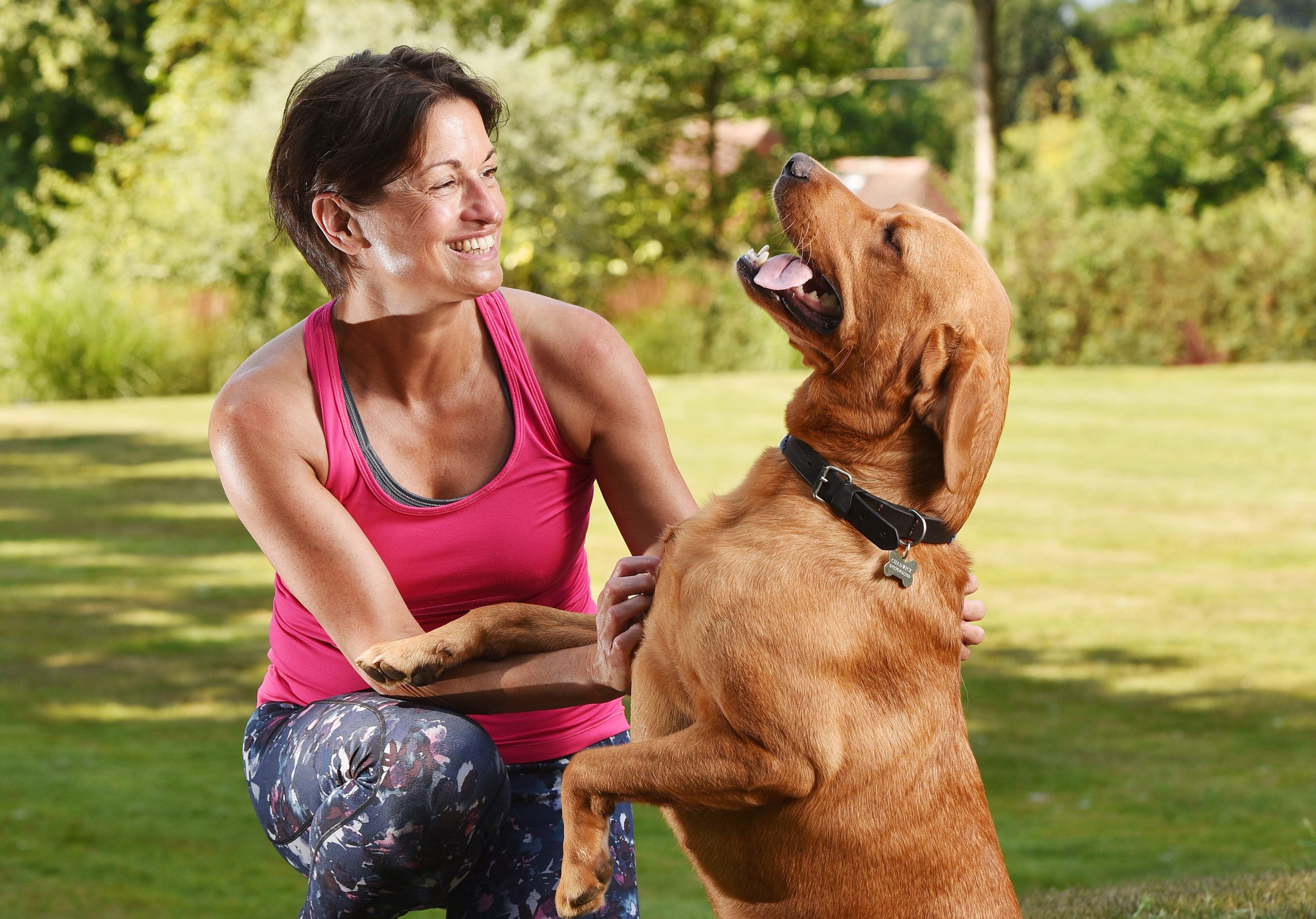How to start jogging with your dog
Running with your dog is good for your health

As those who have a pet pooch will testify, a walk with your dog is great exercise and a huge mood booster, too - but what about running?
Spending time in the fresh air with your dog not only gets you out of the house - it also gets the endorphins going. But there’s something more you can do to further boost your wellbeing – have a run with your dog. 70 per cent of us participate in some kind of sport with our dogs, and running is one that can really make a difference.
Pet food company Canagan teamed up with the University of Chichester to look at the positive impact of different sports with your dog, and found that running with your dog not only burns the calories, it can also boost their mood and help socialise your four-legged friend, too. So, it's the perfect activity if you're worried that your dog is overweight.
'Despite nearly a quarter of adults in the UK owning a dog, there has been very little research investigating the role dogs play in their owners’ motivation for exercise,' said Dr. Sarah Edmunds from the University of Chichester. 'Results show that dog owners experienced a psychological benefit from running with their dog and interview data found participants were autonomously motivated to run with their dogs'.
You’ll be in good company – the hashtag #runningwithdogs has over 194,000 posts on instagram, with runners sharing their selfies with dogs on special leads tied to the owner’s waist or embracing the joy of the outdoors.
And if you're new to the idea of running, let alone with your four-legged friend, Cadagan has plenty of tips to help you get started. You'll find that you reach a pace that works for both of you if you follow these handy hints.
How to start running with your dog
1) Make sure they're old enough
You really should wait until a young dog’s growth plates (the areas of cartilage near the ends of bones) have started to close, and this time frame varies by breed and size of dog. Dependent on breed, a much smaller dog like a Jack Russell could start running earlier than a larger dog, like a Great Dane, whose growth plates will take longer to seal up. If a puppy is made to do particularly arduous exercise in its early life, such as going for a lengthy run on a lead along a hard surface such as a pavement, this can result in the dog sustaining long-term injuries.
GoodtoKnow Newsletter
Parenting advice, hot topics, best buys and family finance tips delivered straight to your inbox.
2) Start slow
Too much, too soon increases your dog’s risk of injury as well as your own. Find a training plan that will accommodate both your and your dog’s fitness level so that you can progress at a healthy and safe pace.
3) Consider your commands
Before you set off, ensure your dog’s recall is strong, so that if you’re going anywhere cross country or off the lead, they come back to you when called. Additionally, ensure first that they already walk nicely on the lead so that when you run together, they don’t race ahead or pull you along.
4) Go for soft terrain
Running on softer ground such as woodland trails or over the fields will be easier on your dog’s joints and paws. Plus, the natural sights, smell and sounds will be more stimulating than running on the road. Map your route out first to ensure you're going to dog-friendly areas and that the paths are safe for you both to run on.
5) Remember to warm up!
Before heading out, ensure that you've both had a few minutes walking or slowly jogging before setting the pace. This is also a great opportunity for your dog to get his or her sniffing and toilet breaks out of the way before you set off on the run.
6) Watch out for 'stopping' warning signs
If your dog stops and refuses to continue, don't force things. During and after your run, watch your dog for signs of heatstroke or overexertion, such as lethargy, weakness, dark red gums, vomiting or panting to the point that he or she can't catch their breath.
7) Keep at it!
Henry Dove, Veterinary expert for Canagan, said: "The companionship you share with your dog offers so many benefits and this can be applied to running with your dog. Building runs into your pet’s daily exercise regime will ensure they will be fit, will be less likely to be overweight, will keep their joints mobile, and will strengthen their muscle mass. They will also get mental stimulation from going to new places and be happy that they are doing something with you. It is important to remember that like humans, your dog will need to build their running endurance over time, and they will need water along the way too.”